Want to get married? Go alone into the dense jungle for one month. At the end of the month, if you are alive and return to the village, you may marry.
NIGHT SAFARi
One night I signed up for a safari, riding a 4X4 through the jungle looking for wildlife
. It was a 2 hour trip through rough, washed out, roads and a nice trip. However, the only wildlife we spotted were two very colorful birds resting in the trees and some small animal the guide called a tigercat.
ORANG ASLI TRIBE
Some of the girls marry at the age of 15, but most are married between 17-19 years old. The families have 9-11 children each.
Today I am visiting an Orang Asli tribe in the rainforest here in Malaysia. I enjoy discovering new sights on my own most of the time, but sometimes a tour guide is necessary. This is one of those times. Most of these tribes do not allow outsiders. This is one of the few that does, but it needs to be with a local guide.
Our guide tells us to wander into a tribe uninvited deep in the jungle can hold serious and uncertain consequences. You may never be heard from again. The tribe we will visit upriver today welcomes outsiders, but only by invitation
.
"Orang Asli" means "original people", "natural people", or "aboriginal people" in the Malay language. For thousands of years before the Malay people arrived in the area, the Orang Asli people had already been living here.
We take a sampan for an hour or so ride and come to a village on the river. On the banks, among a few small huts, our guide tells us about the Orang Asli tribe that lives here.
TRIBE
The Orang Asli people live in small family groups located in hard to find and hard to reach jungle areas. Officially, there are 18 Orang Asli tribes, divided into 3 main groups according to their different languages and customs. The tribes cannot communicate with each other because of the language differences. There is no written language, only spoken.
At one time these were head-hunting tribes, but our guide assures us that practice has ended now! I hope he is being truthful and not just saying that to get us go on his tour
.
VILLAGES
They live without electricity or running water and do not have schools. Each village has a "Chief". The chief serves for a set number of years, then a new chief is elected. The election is a big deal in the village. The chief is also the medicine man and his wife is the medicine woman.
Each of the 18 Orang Asli tribes have their own languages and customs, and each have a number of villages in the tribe. Each village has 40-100 families, each with between 9-11 children.
The tribes do not intermarry with other tribes, as they see all the tribes as "different" people, each with their own language and customs.
But, there is evidence that for the last few hundred years, the tribes did interact with the Malay people for some trading of jungle goods for salt, knives and metal axe-heads. There is also some evidence that certain tribes traded between themselves for blowpipes and blowpipe-bamboo
.
LIFE SPAN
I asked how long the average person lived. (I was curious since they didn't have modern medical care as we do). The guide said he did not know the language of the tribe here. They do not have any written words, it is all just learned by speaking. So, he cannot speak with them. But, one day he used hand signals and drawn images in the dirt to talk to a man in the village.
He asked the man his age. He told him he was a child before the jungle was a national park. The guide figured out the man had to be around 90 years old. The guide said the man's hair was still black, no gray or silver, and his body was muscled strong. The people do not know their own ages, but go by events such as being a child when another person was born or was an adult.
Everyone in our group was amazed at the long healthy lifespan of these tribes people. The guide said he thought it was because there was no stress to their lifestyle
. They do not use money and have no bills to pay. They do not fight traffic or breath bad air. They eat natural foods and exercise everyday hunting and working on their dewellings.
FOOD
The men go into the jungle, hunting food, using a bamboo blow gun they make themselves. The poison for the darts is taken from a tree they find in the jungle. The poison is not harmful outside the bloodstream. You can touch the poison or get it on your body without harm. But, once the dart is dipped in the poison and it enters the body of an animal it enters the bloodstream and becomes deadly.
The animal it is shot into does not die. The poison flows through the bloodstream and paralyzes the victim. It takes 30 minutes to paralyze a human but only 3 minutes for an animal.
A man from the tribe came to demonstrate making fire and making a poison blow-dart. The guide let each of us shoot the (un-poisoned) darts at a target
. I hit the target but not dead center.
The women fish while the men go into the jungle to hunt. But, the women do not use hooks, poles, or nets. They fish using their hands only.
CLOTHING
The tribe people at one time lived naked, then progressed to making their clothing from palm leaves, clothes made from animal skins were too hot. About 20 years ago, they started wearing clothes made from cloth, the same as we wear. The tribes don't use money so they barter with the local Malays for their clothes, taking their garden or animal products to trade.
NOMADS
They are a nomadic people. Meaning they are always moving. They live in a place for maybe a year or two and then move their village to a different location in the jungle. The huts are left intact. They just take their personal belongings when they move.
There are a couple of reasons for the move. One reason is when the crops they plant are not producing as well, they move to give the land a chance to rest
. Or, if the hunting is no longer good, they move for better game. In these cases, they will return to the village a few years later to live.
The other reason they move is when someone in the village dies. The body is hung in the tree. But, it is laid out on a bamboo platform and has a roof on it. Food, tools, and personal items are left with the body for use when the person's spirit returns.
The tribe moves away to another place in the jungle and builds a new village. It is a bad omen to stay in the old village when someone has died there.
They do not have a religion as such, but believe in spirits. When the spirit of the deceased person returns they will take a new body to live in. So, with the things left with the old body, they have a good start in the new life.
After 2-3 years, the tribe members return and take the bones of the old body form the trees and bury them in the ground
.
DATING AND MARRIAGE
When the young people get interested in marriage, they go into the jungle to a trail. They parade up and down the path, looking at young people from the other villages. (It sounds to me like a 'strip' many American cities and towns have where the young people hang out and drive their auto up and down on weekends).
They cannot marry someone in their own village because the people in the village are all related.They do not marry outside their own tribe because the language and customs are a problem.
If a couple decides to marry, the boy, between 17-19 usually, goes to the chief of his village and asks for permission to marry. The chief orders him to go into the jungle alone for one month. He takes no food or supplies. If he returns at the end of one month, he can go back to the chief and will be given permission to marry.
Often the boy never returns from the jungle
. The family or village members never go in search of him. He was not man enough to survive the jungle and is forgotten. The girl choses another boy for marriage.
While the boy is away in the jungle, the girl must put a palm-leaf roof on the hut they will live in. If she can put on a roof that does not leak, she can marry. If the roof leaks, she cannot marry and if the boy returnes from the jungle, he must find a different mate.
Overall
After our guide told us about the tribe, he called in a tribe member to demonstrate making a fire using bamboo and other jungle materials. He also made a dart for the blowgun and the poison tip for it. The ball on the end of the dart, for balance, is made from a very lightweight tree material. Leaves from a jungle tree that have a rough side, like sandpaper, is used to smooth the ball on the tip of the dart for balance.
Then, our guide demonstrated the blow gun and each of us got to try to hit a target using it
. The bamboo blowgun itself was long, for accuracy, but very lightweight. I hit the target, but not the center! I want a blowgun of mine own but I don't think the TSA will allow me on the plane with one.
Our guide told us we could walk through the village and if we pointed our camera at one of the tribe members, they would either walk away or stay. If they walked away, they did not want their picture taken. If they didn't move, it was okay to photograph them.
The place where the guide told us about the tribes and where the blowgun demo was done was on the riverbank, surrounded by a few huts. The huts looked lived in but no one was inside them. Two of us started up the trail into the forest where we could
Two of us started out walking, on our own, into the jungle where we could see glimpses of more village huts. Before we got into the jungle, though, our guide saw us and called us back. We never saw the actual village or the people. The only village person we saw was the man that demonstrated making the fire and the poison blow-gun darts. He never spoke a word, only did his thing and left.
Next: "The Largest Flower in the World"
Death in the Jungle (Malaysia)
Monday, March 10, 2014
 Kuala Tahan, Pahang, Malaysia
Kuala Tahan, Pahang, Malaysia
Other Entries
-
143I Get Into A Fight With Two Cambodians (Cambodia)
Feb 1226 days prior Siem Reap, Cambodiaphoto_camera65videocam 15comment 0
Siem Reap, Cambodiaphoto_camera65videocam 15comment 0 -
144Cambodia Cultural Museum (Cambodia)
Feb 1325 days prior Siem Reap, Cambodiaphoto_camera172videocam 2comment 0
Siem Reap, Cambodiaphoto_camera172videocam 2comment 0 -
145Shows of the Cambodia Culture Museum (Cambodia)
Feb 1424 days prior Siem Reap, Cambodiaphoto_camera81videocam 18comment 0
Siem Reap, Cambodiaphoto_camera81videocam 18comment 0 -
146Back in the U.S.? (Malaysia)
Feb 1523 days prior Kuala Lumpur, Malaysiaphoto_camera118videocam 15comment 0
Kuala Lumpur, Malaysiaphoto_camera118videocam 15comment 0 -
147Monkey Business in Malaysia (Malaysia)
Feb 1523 days prior Kuala Lumpur, Malaysiaphoto_camera70videocam 1comment 1
Kuala Lumpur, Malaysiaphoto_camera70videocam 1comment 1 -
148Monkey Business Part 2 (Malaysia)
Feb 1523 days prior Kuala Lumpur, Malaysiaphoto_camera109videocam 3comment 0
Kuala Lumpur, Malaysiaphoto_camera109videocam 3comment 0 -
149Cultural Dance Performance (Malaysia)
Feb 1622 days prior Kuala Lumpur, Malaysiaphoto_camera46videocam 9comment 0
Kuala Lumpur, Malaysiaphoto_camera46videocam 9comment 0 -
150The Bus Ticket to Texas (Malaysia)
Feb 1721 days prior Georgetown, Malaysiaphoto_camera134videocam 0comment 0
Georgetown, Malaysiaphoto_camera134videocam 0comment 0 -
151The Star-Shaped Fort (Malaysia)
Feb 1820 days prior Georgetown, Malaysiaphoto_camera48videocam 0comment 0
Georgetown, Malaysiaphoto_camera48videocam 0comment 0 -
152The Largest Temple in SE Asia! (Malaysia)
Feb 2117 days prior Georgetown, Malaysiaphoto_camera132videocam 2comment 0
Georgetown, Malaysiaphoto_camera132videocam 2comment 0 -
153Snake Temple (Malaysia)
Feb 2216 days prior Georgetown, Malaysiaphoto_camera48videocam 0comment 0
Georgetown, Malaysiaphoto_camera48videocam 0comment 0 -
154Malaca (Malysia)
Feb 2513 days prior Malacca City, Malaysiaphoto_camera96videocam 0comment 0
Malacca City, Malaysiaphoto_camera96videocam 0comment 0 -
155Beauty Tips (Malaysia)
Feb 2612 days prior Malacca City, Malaysiaphoto_camera64videocam 0comment 0
Malacca City, Malaysiaphoto_camera64videocam 0comment 0 -
156Pile the Heads Here (Malaysia)
Feb 2612 days prior Malacca City, Malaysiaphoto_camera86videocam 0comment 0
Malacca City, Malaysiaphoto_camera86videocam 0comment 0 -
157The Inconclusive Conclusion (Malaysia)
Mar 019 days prior Malacca City, Malaysiaphoto_camera90videocam 5comment 0
Malacca City, Malaysiaphoto_camera90videocam 5comment 0 -
158NO RICE! (Malaysia)
Mar 082 days prior Jerantut, Malaysiaphoto_camera68videocam 12comment 0
Jerantut, Malaysiaphoto_camera68videocam 12comment 0 -
159The Oldest Rainforest on Earth (Malaysia)
Mar 091 day prior Kuala Tahan, Malaysiaphoto_camera84videocam 13comment 0
Kuala Tahan, Malaysiaphoto_camera84videocam 13comment 0 -
160Death in the Jungle (Malaysia)
Mar 10 Kuala Tahan, Malaysiaphoto_camera34videocam 9comment 1
Kuala Tahan, Malaysiaphoto_camera34videocam 9comment 1 -
161The Largest Flower in the World! (Malaysia)
Mar 111 day later Cameron Highlands, Malaysiaphoto_camera119videocam 18comment 0
Cameron Highlands, Malaysiaphoto_camera119videocam 18comment 0 -
162City of the Cat (Malaysia)
Mar 177 days later Kuching, Malaysiaphoto_camera76videocam 9comment 0
Kuching, Malaysiaphoto_camera76videocam 9comment 0 -
163My Texas Friend, Al, In Borneo! (Malaysia)
Mar 199 days later Kuching, Malaysiaphoto_camera32videocam 8comment 2
Kuching, Malaysiaphoto_camera32videocam 8comment 2 -
164The Thief (Malaysia)
Mar 2111 days later Kuching, Malaysiaphoto_camera110videocam 22comment 0
Kuching, Malaysiaphoto_camera110videocam 22comment 0 -
165Confucius and Chopsticks (Malaysia)
Mar 2212 days later Kuching, Malaysiaphoto_camera69videocam 22comment 0
Kuching, Malaysiaphoto_camera69videocam 22comment 0 -
166The Jungle Tribes of Borneo! (Malaysia)
Mar 2414 days later Kuching, Malaysiaphoto_camera95videocam 20comment 0
Kuching, Malaysiaphoto_camera95videocam 20comment 0 -
167Not Enough Water in the River? (Malaysia)
Mar 2616 days later Sibu, Malaysiaphoto_camera24videocam 8comment 0
Sibu, Malaysiaphoto_camera24videocam 8comment 0 -
168Death Ships (Malaysia)
Mar 3020 days later Miri, Malaysiaphoto_camera56videocam 13comment 0
Miri, Malaysiaphoto_camera56videocam 13comment 0 -
169Disconnected From the World! (Malaysia)
Mar 3121 days later Gunung Mulu National Park, Malaysiaphoto_camera32videocam 10comment 0
Gunung Mulu National Park, Malaysiaphoto_camera32videocam 10comment 0 -
170Seeing "The Garden of Eden" (Malaysia)
Apr 0324 days later Limbang, Malaysiaphoto_camera58videocam 9comment 0
Limbang, Malaysiaphoto_camera58videocam 9comment 0 -
171Headhunters of Borneo! (Malaysia)
Apr 0425 days later Kota Kinabalu, Malaysiaphoto_camera43videocam 6comment 0
Kota Kinabalu, Malaysiaphoto_camera43videocam 6comment 0 -
172The World's Most Expensive Building! (Singapore)
Apr 1940 days later Singapore, Singaporephoto_camera107videocam 19comment 0
Singapore, Singaporephoto_camera107videocam 19comment 0 -
173Home Again? (Indonesia)
Apr 2344 days later Yogyakarta, Indonesiaphoto_camera113videocam 14comment 0
Yogyakarta, Indonesiaphoto_camera113videocam 14comment 0 -
174Walking The Volcano Rim (Indonesia)
Apr 2950 days later Tengger Caldera, Indonesiaphoto_camera111videocam 32comment 0
Tengger Caldera, Indonesiaphoto_camera111videocam 32comment 0 -
175The World's Most Expensive Coffee! (Indonesia)
May 0253 days later Sanur, Indonesiaphoto_camera156videocam 21comment 0
Sanur, Indonesiaphoto_camera156videocam 21comment 0 -
176When I Say America (Indonesia)
May 0455 days later Senggigi, Indonesiaphoto_camera87videocam 11comment 0
Senggigi, Indonesiaphoto_camera87videocam 11comment 0 -
177The Amazing Rinjani (Indonesia)
May 0859 days later Senggigi, Indonesiaphoto_camera45videocam 7comment 0
Senggigi, Indonesiaphoto_camera45videocam 7comment 0 -
178The World Without Automobiles (Indonesia)
May 1162 days later Gili Trawangan, Indonesiaphoto_camera48videocam 5comment 0
Gili Trawangan, Indonesiaphoto_camera48videocam 5comment 0
Comments
2025-05-22
Comment code: Ask author if the code is blank

 Kuala Tahan, Pahang, Malaysia
Kuala Tahan, Pahang, Malaysia
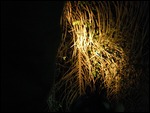
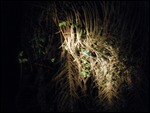
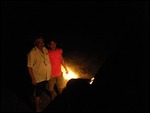

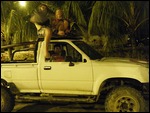
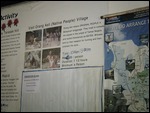
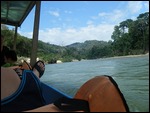
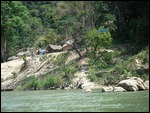
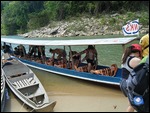




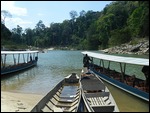
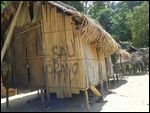
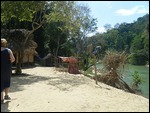
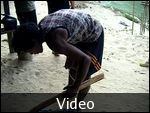
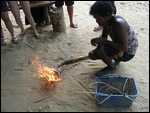
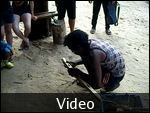
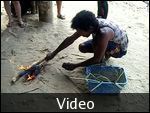
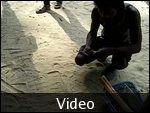
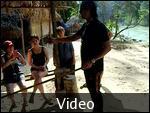
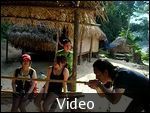
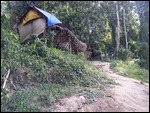
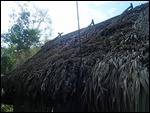
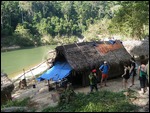
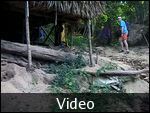
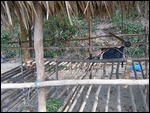
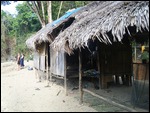
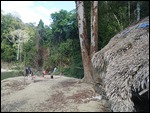
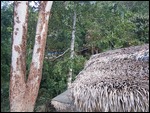
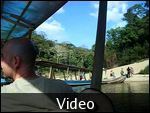
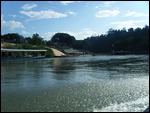
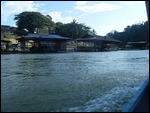
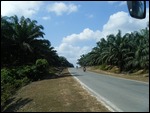
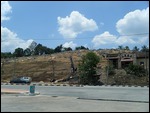
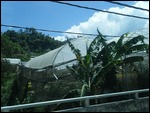
Colin Nicholas
2021-06-16
Can you please give me the name and contact of your guide? He (or she) has obviously given you some wrong perceptions of the Orang Asli community you visited. And he is in need of some re-education lest he continues to hoodwink and impress visitors like you who often take the word of such people as factual and without prejudice. Colin, Center for Orang Asli Concerns, Malaysia)